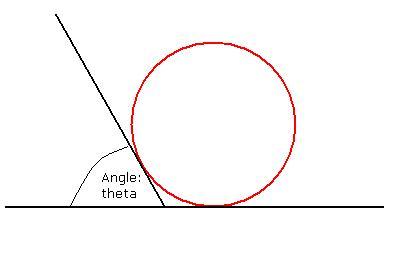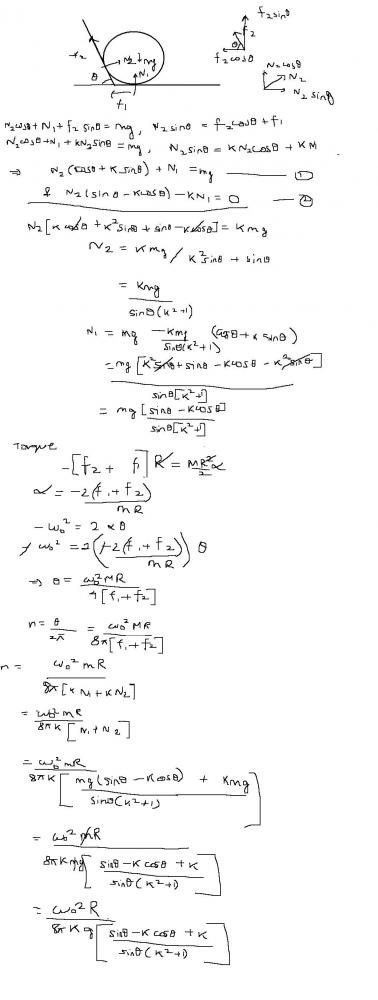my denominator of A is coming (k^2+1)sinθ
Assume that the day began 10-12 hrs late.. i forgot to post the question today! here it is in a hurrry.. i modified a question of irodov.. Dont have a final solution .. but the fearless and the conceptful should give it a shot :)

A cyllinder(radius R) is made to rotate at ω angular velocity and put at the edge as shown.. the base shows the ground.
The coefficient of friction is k
How many turns will the cylinder make before stopping..?
Assume that k is not large enuf for the sphere to start moving upwards!
*edits: no there is no translation..
friction is on both surfaces.
rotation is anticlockwise
I modified question 1.248 from irodov.
-
UP 0 DOWN 0 0 12

12 Answers
is friction there at both the surfaces
and is friction coefficient k such that
the body gives translational motion as well
answer is coming out to be =
w2mR/8kπA
where A = mg(k+sinθ-kcosθ)/(k2sinθ+sinθ)
now it could be correct
w = intial ang. speed
yes rohan and cool spirit.. and Ith Power :)
good work
only thing is that u could cancel out both the m's in the numerator and denominator :)
Good work eureka [1]
Aside: there are not as good users as rohan was in physics..
very true...[1]
and i too found this ques unsolved by luck..then seeing it pending ..decided to post its soln
just wonder why it took so long for anyone to find it unsolved ?
